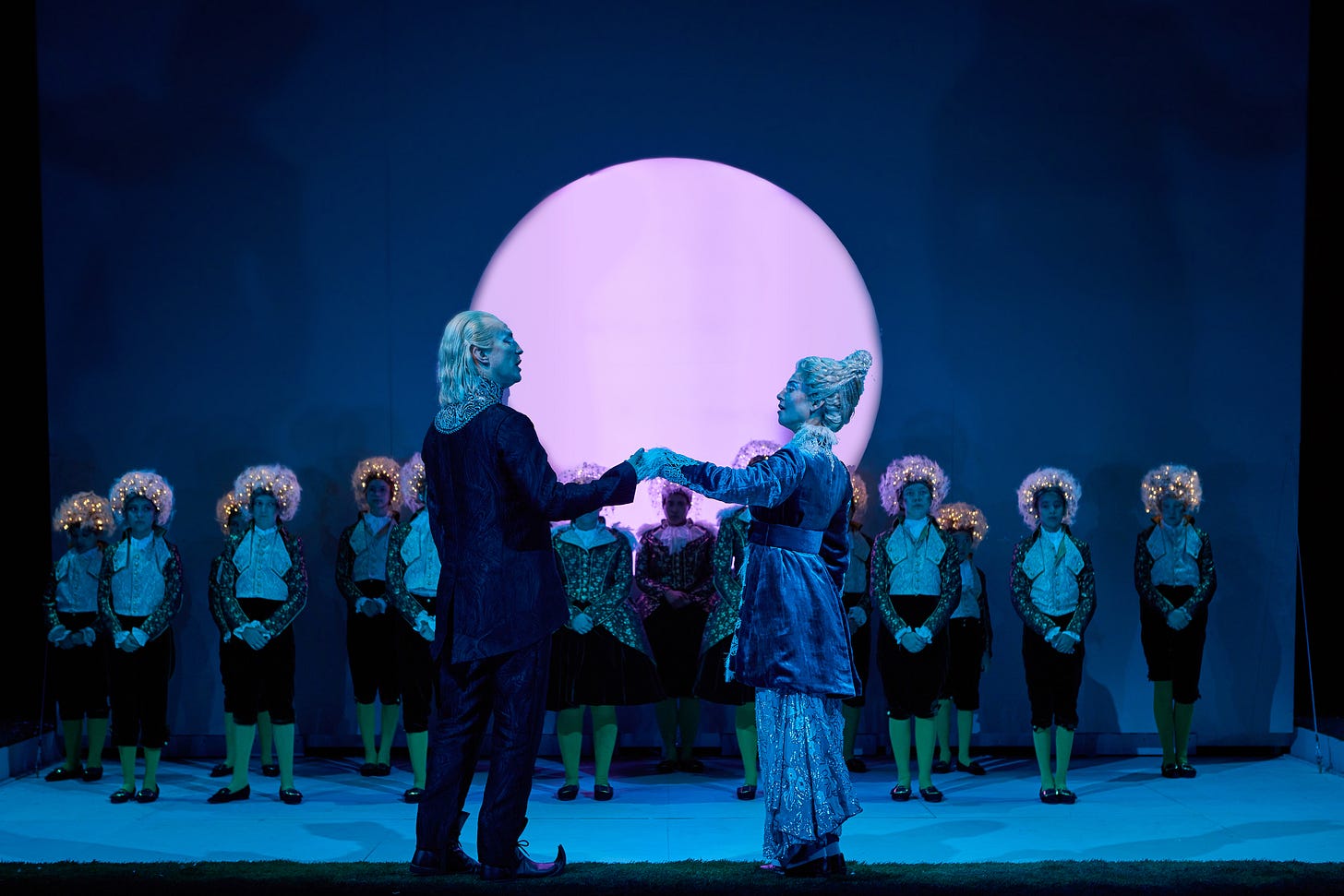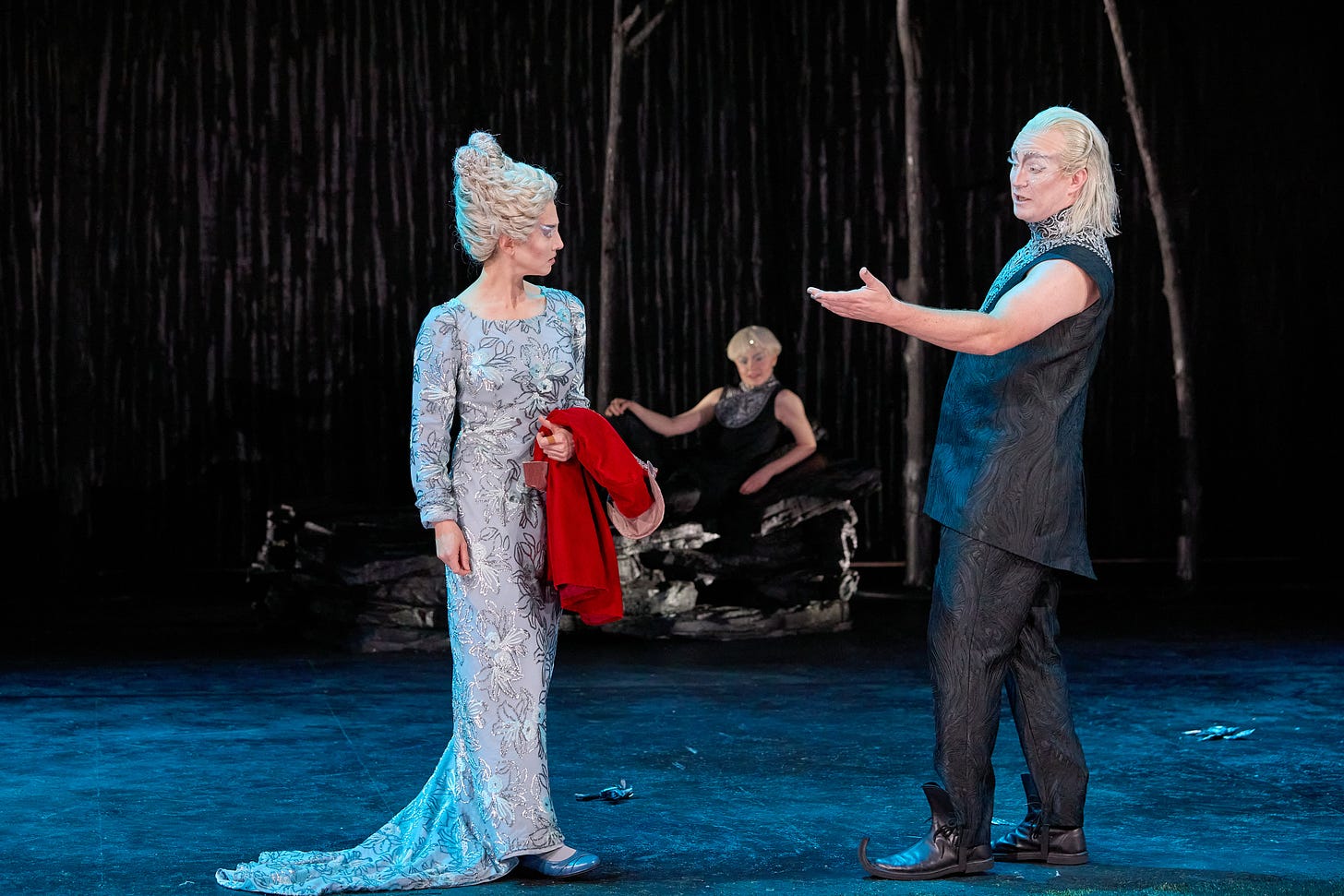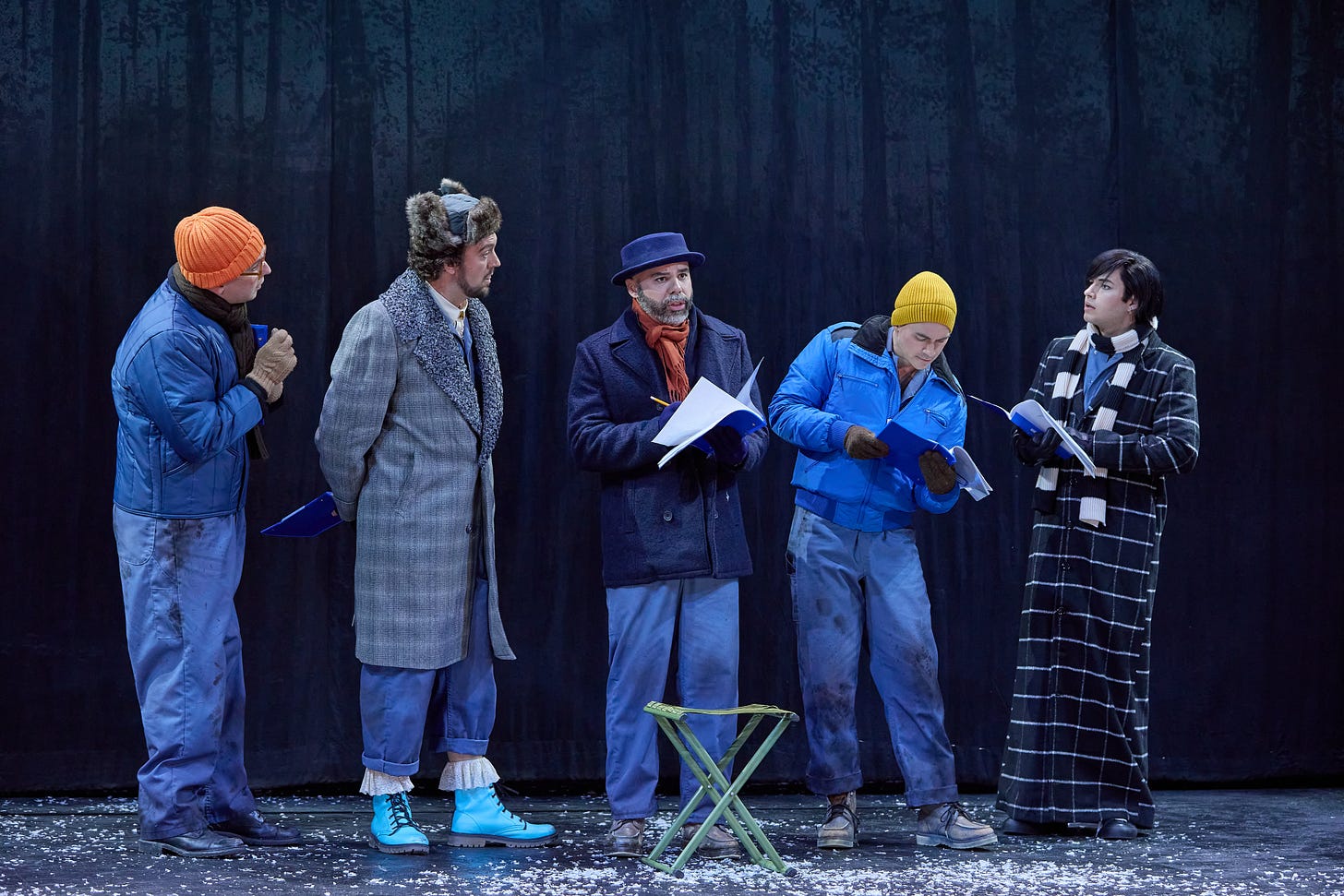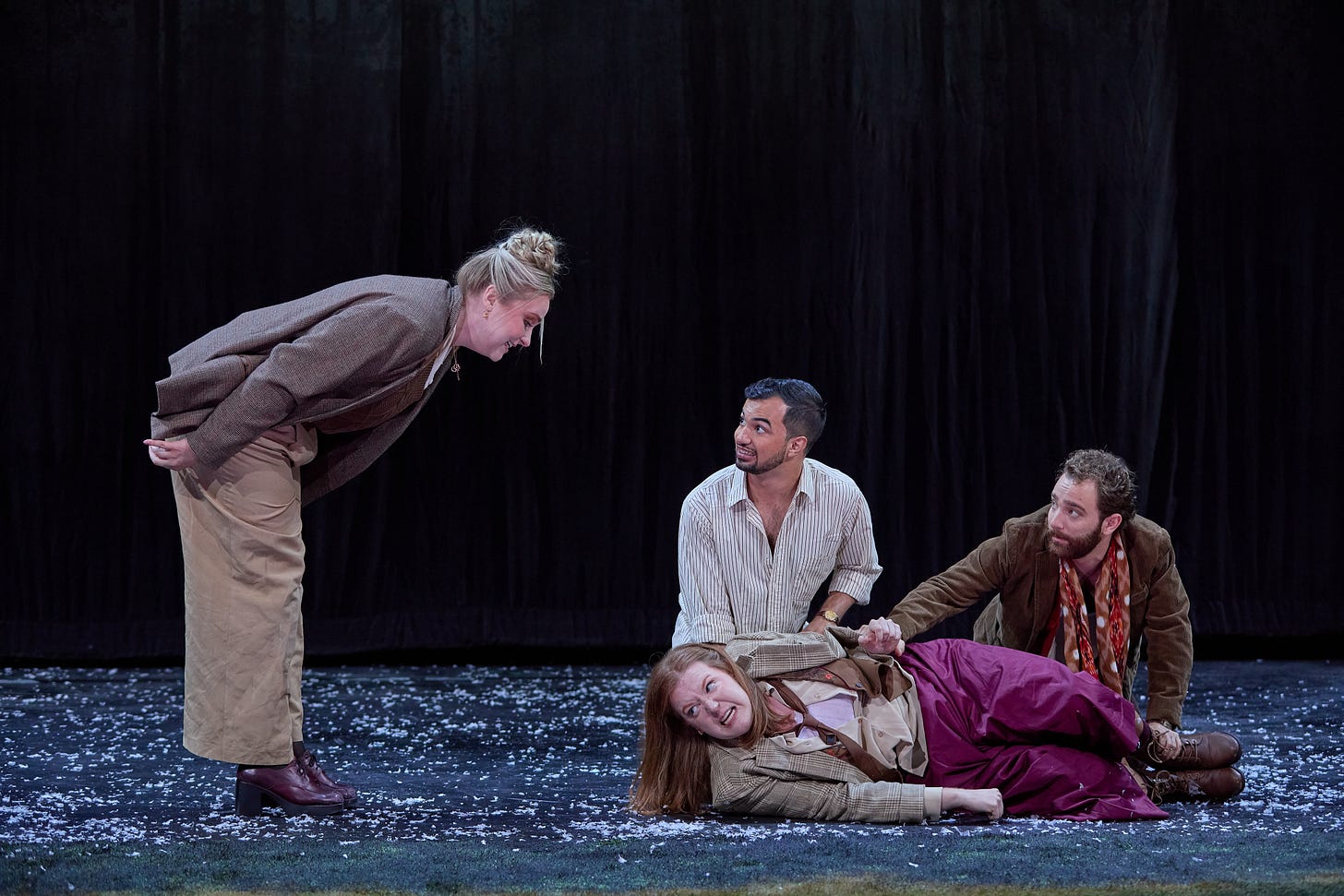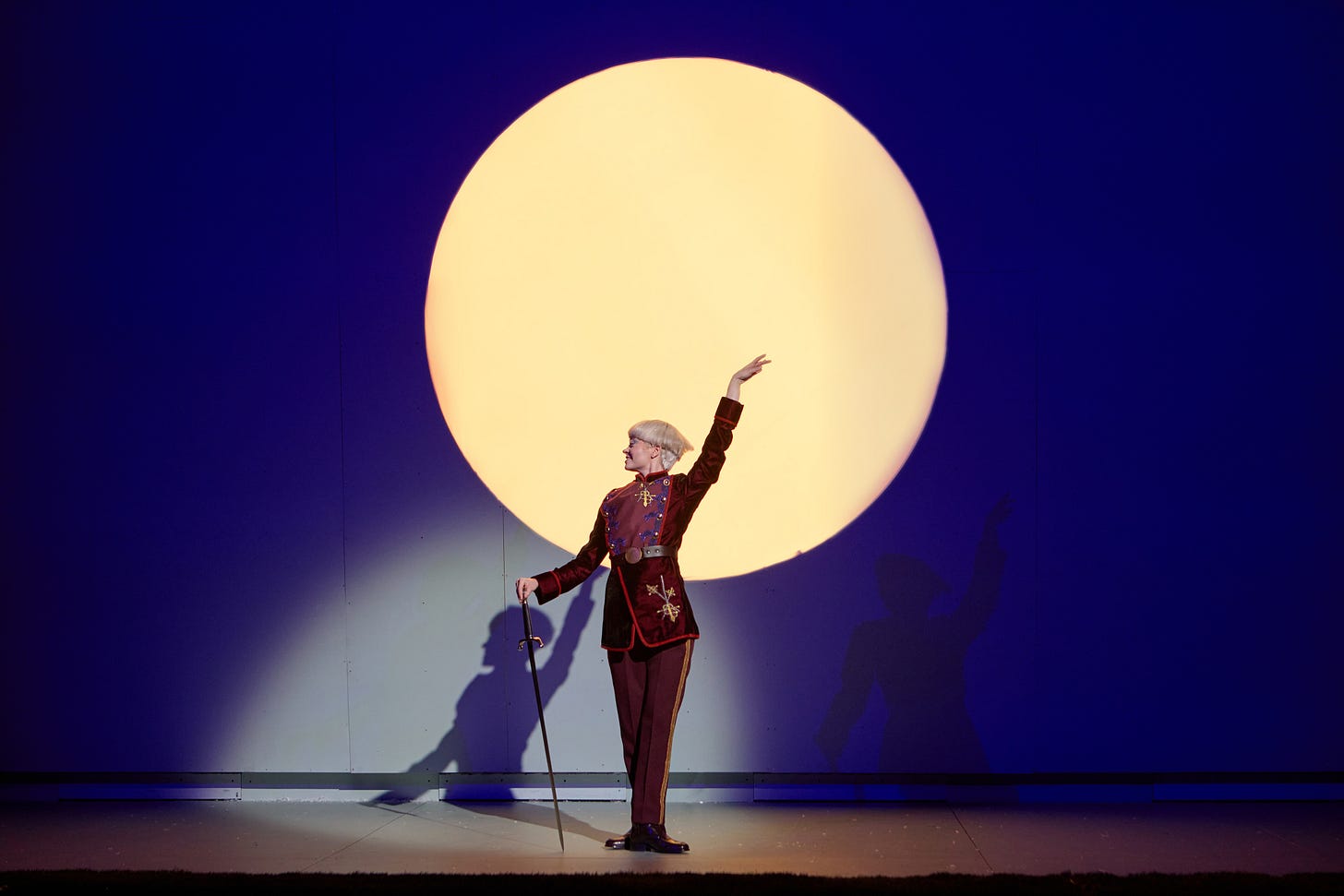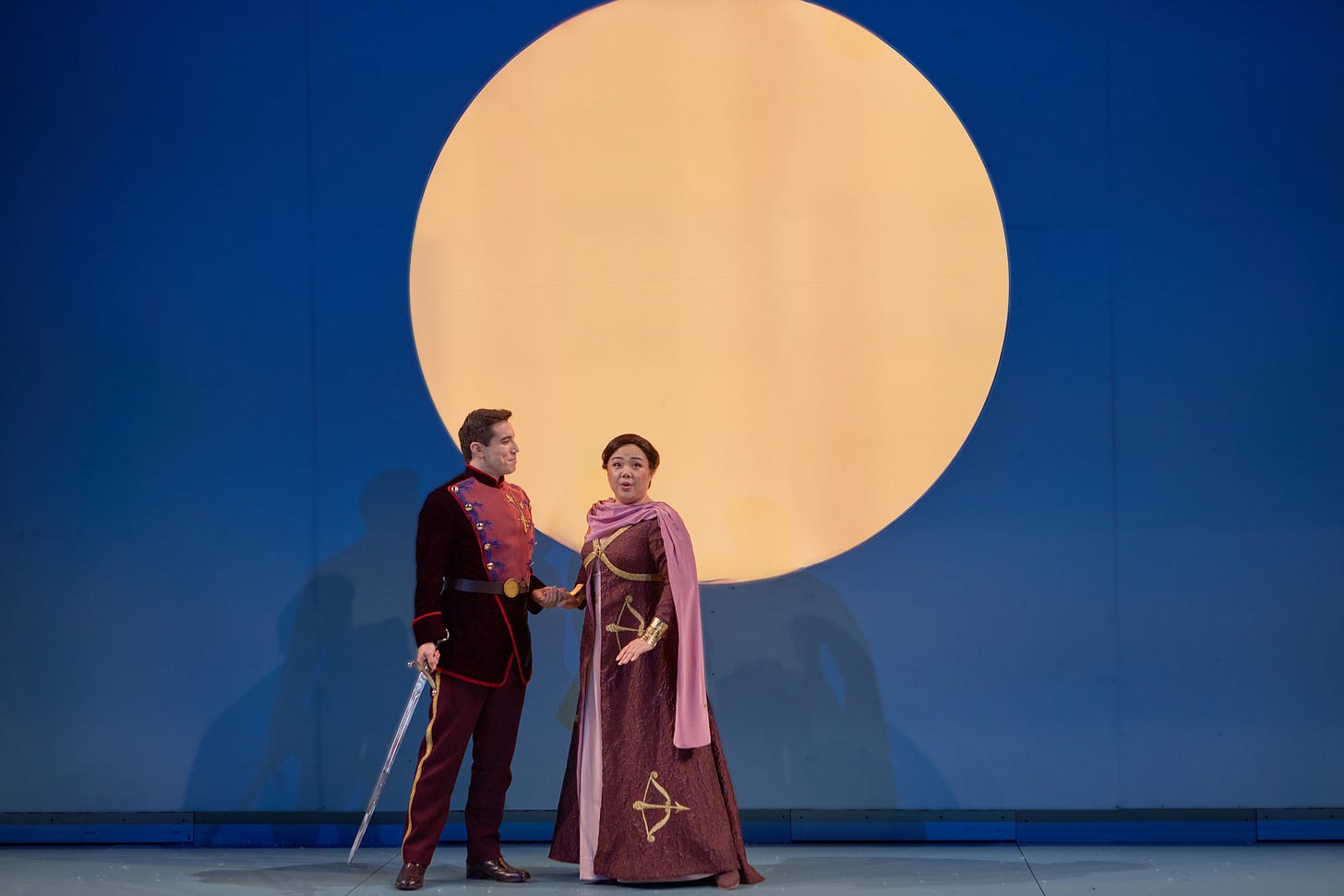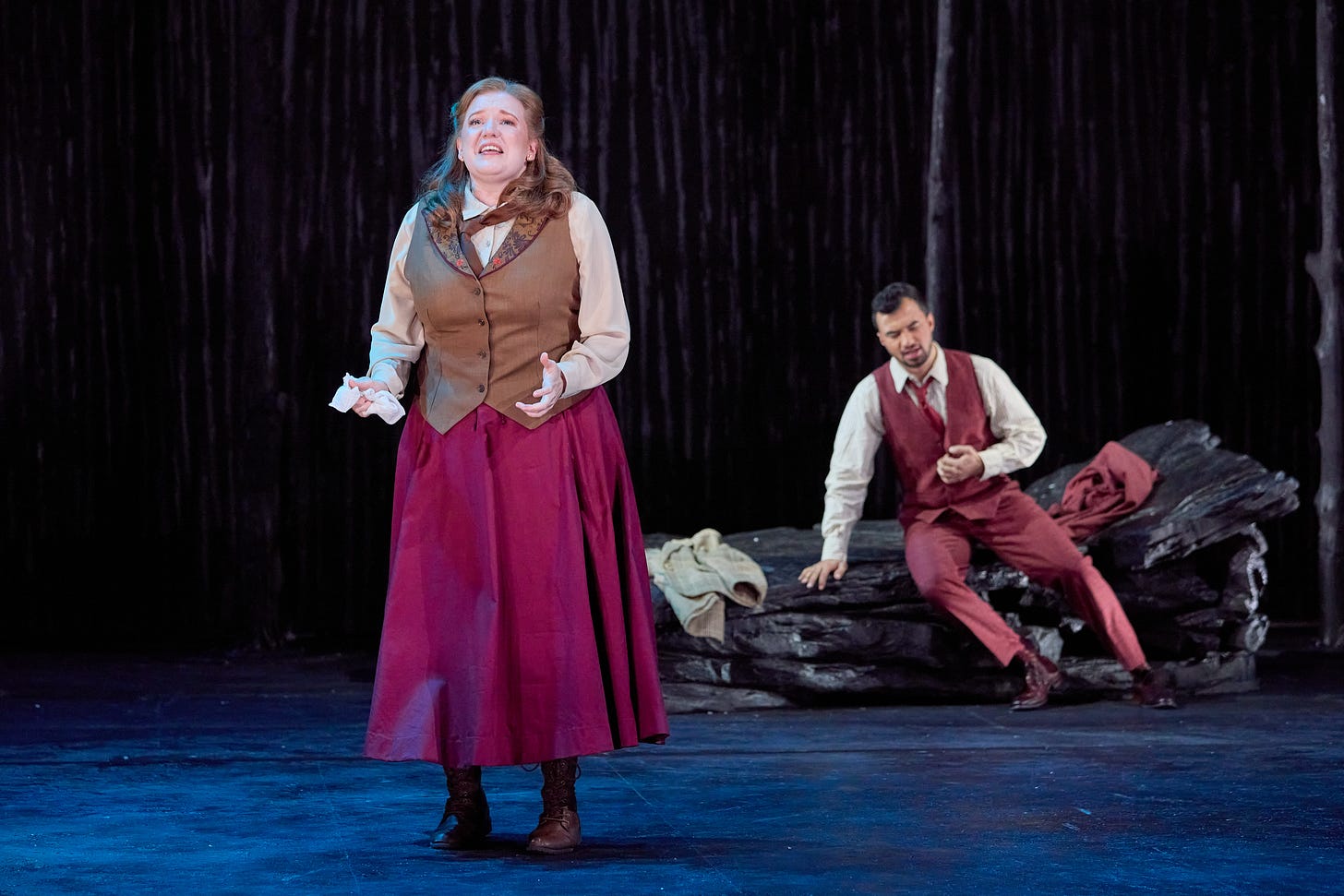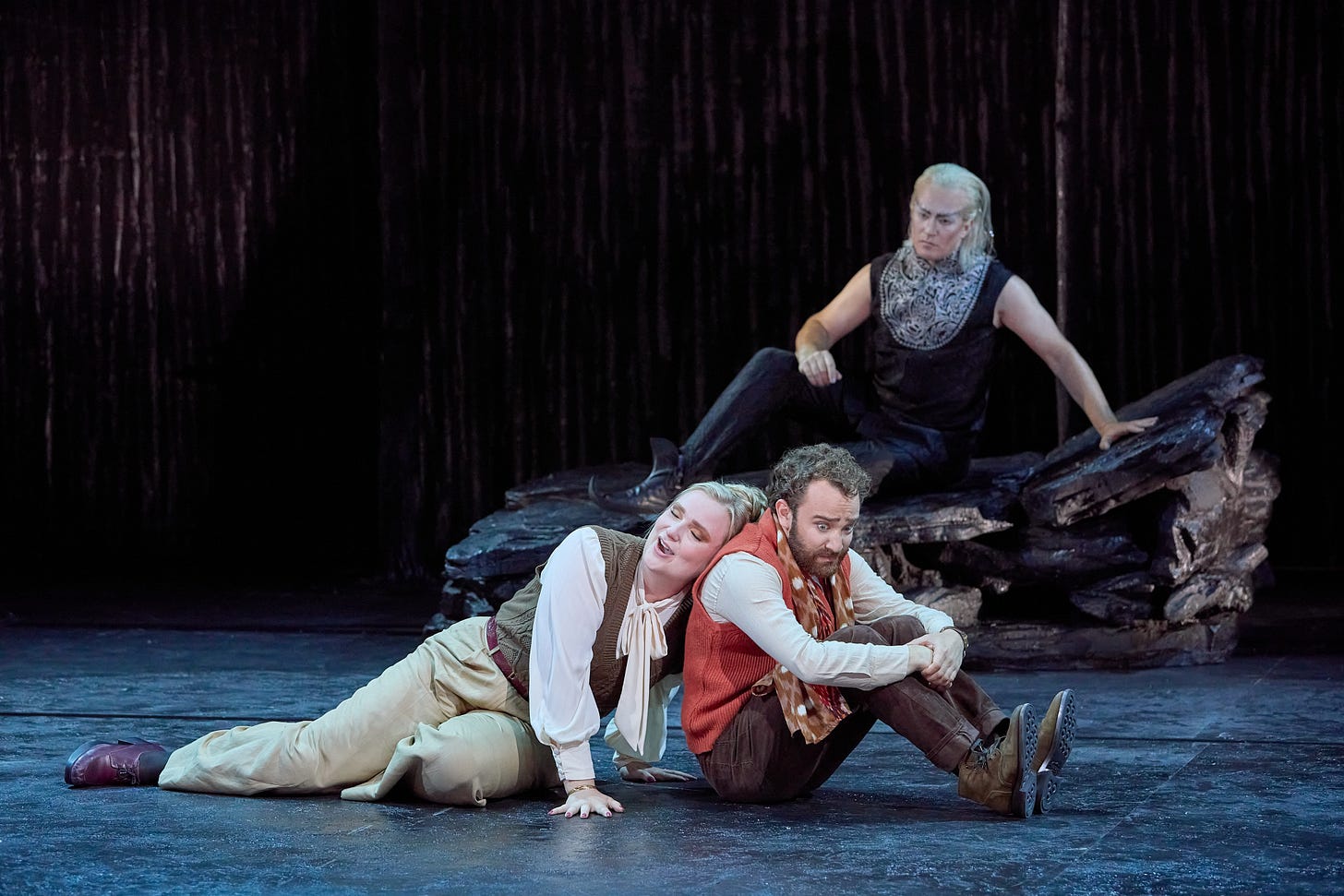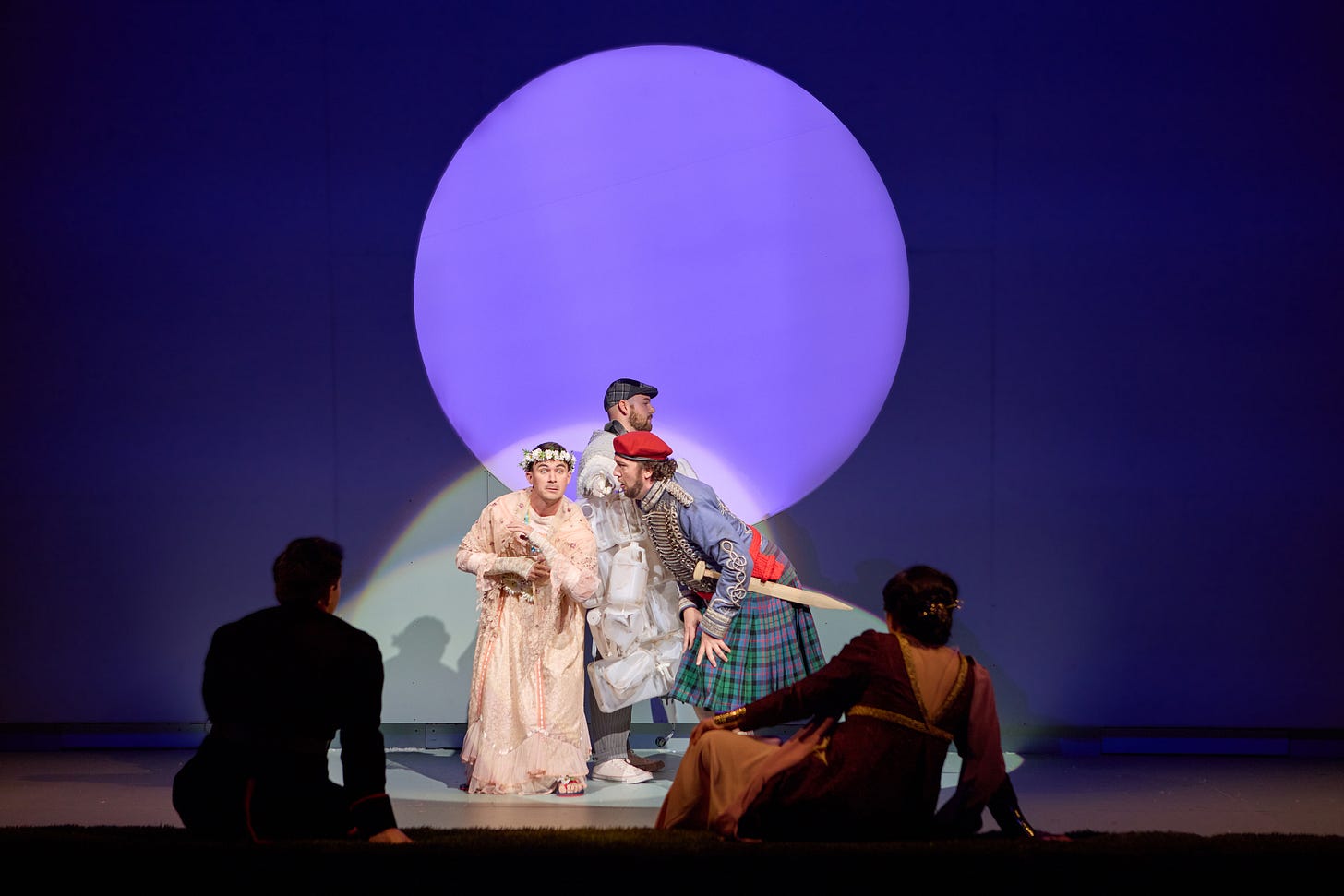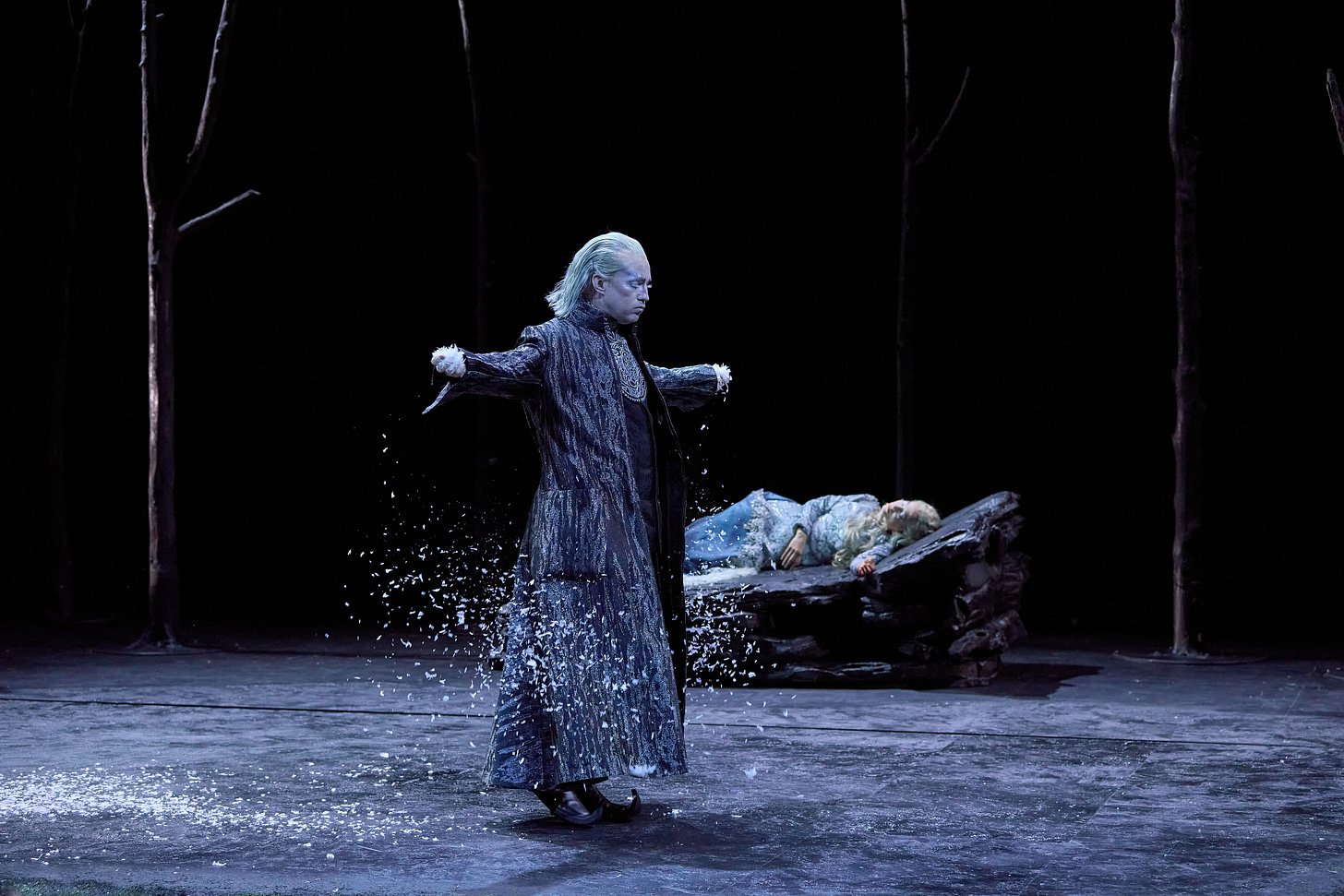Through June 28: A Dreamy "Midsummer" at Opera Theatre
A stunning piece of musical theatre in every possible way
“We are such stuff / As dreams are made on” - The Tempest, IV,1
The fourth and last production of the Opera Theatre of St. Louis (OTSL) 50th anniversary season is the Benjamin Britten/Peter Pears setting of Shakespeare’s A Midsummer Night’s Dream. A stunning piece of musical theatre in every possible way (you might even call it dreamy), it’s the perfect end to a celebratory season. As I’m writing this, there are only five performances remaining (the last one is June 28th), and if the response on opening night was any indication, you’ll want to get your tickets ASAP.
Composed for the 1960 Aldeburgh Festival, A Midsummer Night’s Dream came from a time in Britten’s life when he was struggling with one of his not infrequent bouts of depression. Problems plagued the opera in the weeks leading up to the premiere, including the insecurity of Britten’s choice for the role of Oberon, famed countertenor Alfred Deller.
A specialist in Renaissance and and Baroque music, Deller had little actual stage experience and was never fully at ease in the role. “Delete me when you think fit,” he said to Britten after dress rehearsal—not exactly the kind of thing one wants to hear from one’s lead.
A Midsummer Night’s Dream was nevertheless an “immediate and sustained success,” according to Britten biographer Neil Powell (Benjamin Britten: A Life for Music, 2013). It’s not exactly part of the standard repertoire (OTSL’s last production was in 1992)—in part, I expect, because countertenor is still a relatively rare voice type. That’s a pity, because it’s poetic, hilarious, and brilliantly scored.
Britten and Pears probably assumed that a mid-20th century British audience would be well acquainted with the play. Since one can’t make that assumption these days, here’s a quick recap.
In ancient Athens, Lysander and Hermia are in love, but Hermia’s father (as such fathers are wont to do in Shakespeare) wants her to marry Demetrius instead. Helena, meanwhile, pines in vain after Demetrius, who remains fixated on Hermia. Hermia and Lysander flee for the home of Lysander’s dowager aunt, where “the sharp Athenian law” can’t pursue them. Demetrius follows them, Helena follows him, and soon all four are lost in the woods, where the fairies are in charge.
Fairy king Oberon and his queen Tytania [sic] meanwhile are having a marital spat, dividing the fairy kingdom into opposing factions and, as a result, generating climactic chaos. That point is emphasized by the staging of the final moments of Act I, when Oberon slowly changes the season from summer to winter.
Finally, there are what Puck calls the “rude mechanicals,” a sextet of Athenian tradesman who intend to perform a play of their own devising as part of the entertainment at the wedding of Duke Theseus and Hippolyta, queen of the Amazons.
The three groups collide one midsummer’s night in the woods. Comic and romantic chaos ensues. Britten composed different music for each group (along with a signature sound for Oberon), creating a richly textured score. The fairies have eerie string glissandi along with a plethora of exotic percussion, the music of the lovers is dramatic and more harmonically conventional, and that of the mechanicals is shamelessly comic, including parodies of Donizetti’s Lucia di Lammermoor for the production of their play, “The most lamentable comedy, and most cruel death of Pyramus and Thisby.”
All of this requires what conductor Leonard Slatkin (Conductor Laureate of the St. Louis Symphony Orchestra) describes as “a rather outsized ensemble.” He notes that “there are numerous challenges for all the musicians,” including “figuring out where to put the orchestra” (the pit at the Loretto Hilton is not exactly roomy), so “one has to be creative in order to meet the score’s demands.”
He and the 50-plus members of the SLSO in the band are more than up to the task, though. Their performance is chockablock with virtuoso solo and small ensemble playing, and Slatkin keeps it all neatly balanced with the cast. This marks Slatkin’s fifth appearance with OTSL, in fact—the most recent being during the “parking lot season” in 2021, when he conducted William Grant Still’s Highway 1 USA and Puccini’s Gianni Schicchi.
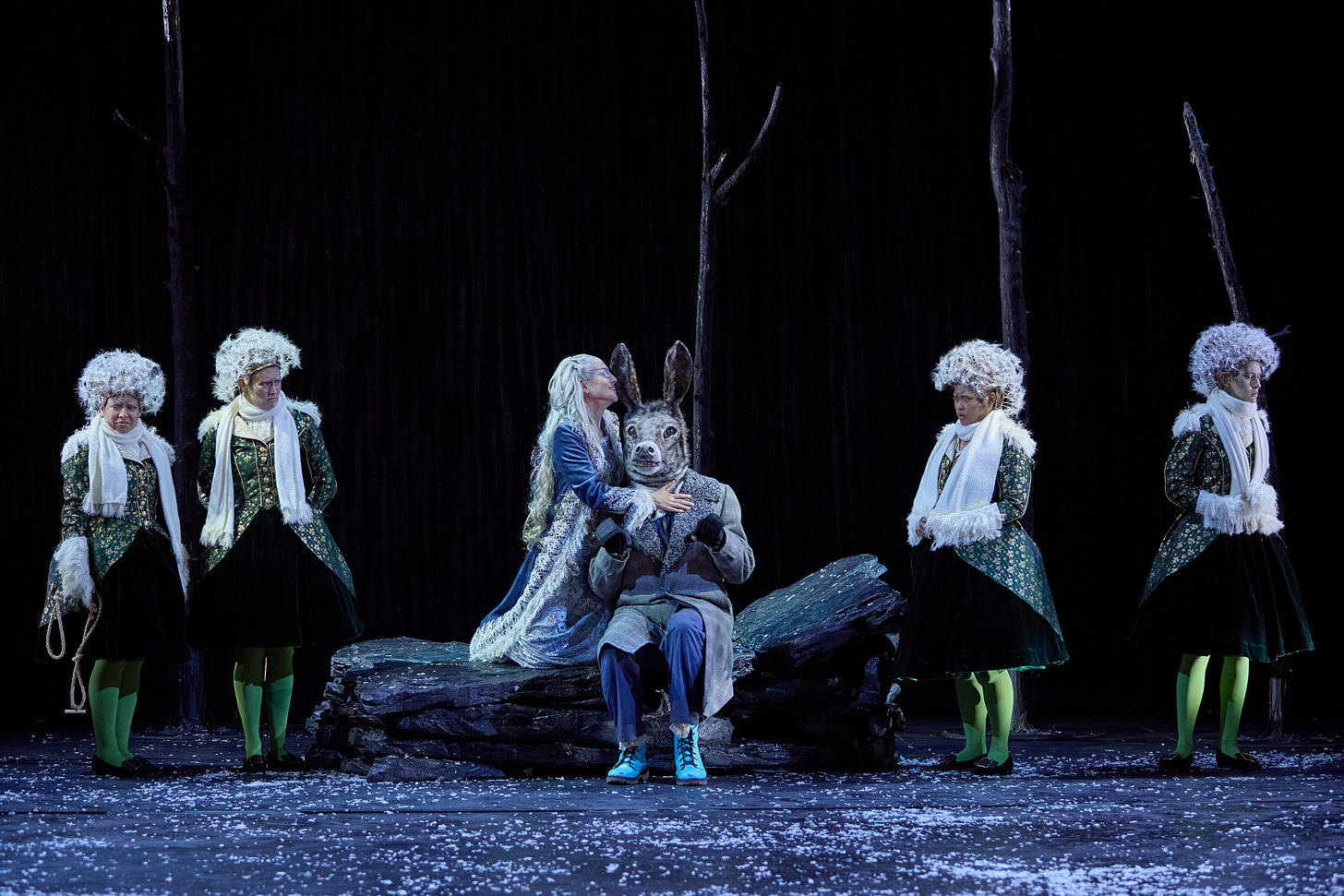
Director Tim Albery’s staging respects and enhances both the music and the libretto, all but one line of which comes directly from Shakespeare’s text. Britten and Pears elected to eliminate Shakespeare’s first act entirely, keeping nearly all of the action in the enchanted forest. Albery, Set and Costume Designer Emma Kingsbury, and Lighting Designer Marcus Doshi have given the forest a gauzy and otherworldly look that seems to exist out of time and space. It complements the opera but never overwhelms it. And the quick scene change from the woods to the palace of Theseus, in which the front third of the stage flips up to reveal a huge Harvest moon, is a minor coup de théâtre.
The cast is the largest of the season, with 18 singing roles and one speaking role (Puck), and the fact that there is not a weak spot anywhere in the group is an index of the show’s strength.
To the extent that this version of Midsummer Night’s Dream has a lead, it would certainly be the fairy king Oberon, sung and acted beautifully by countertenor James Laing. Like Alfred Deller, Laing has solid low notes and an ethereal high end and makes good use of both.
The coloratura role of his queen Tytania gets an equally commanding performance from Jana McIntyre who, like Laing, is making her OTSL debut. Britten wrote some fiendishly difficult and highly melismatic music for the character, through which McIntyre’s voice simply floats as though “wafted by a fleeting gale” (to quote W.S. Gilbert).
Tall, slender, and made up like Star Trek aliens (Oberon, in particular, seems to have some Klingon genes), they have an appropriately regal stage presence.
Webster Conservatory graduate Matisse Carmack invests the spoken role of Puck, Oberon’s fairy of all work, with a sense of gleeful chaos. This particular Puck is also a bit of a shape shifter, taking on the costume of whichever character he’s choosing to personify at the moment. It’s neat touch, although a bit confusing the first time it happens because it involves acting as a kind of doppelgänger for Tytania.
The two pairs of mismatched lovers are less well-developed characters here than in Shakespeare’s play, but the quartet of performers invests the roles with genuine heart. Tenor Anthony Léon and mezzo Jennifer Johnson Cano are Lysander and Hermia, while baritone Theo Hoffman and soprano Teresa Perrotta are Demetrius and Helena. All four are impressive singers and handle the sometimes hyperkinetic physical comedy with aplomb.
Speaking of comedy, here’s a laurel wreath and hearty handshake (sorry about that, Mel Brooks) for the mechanicals. As Quince, the beleaguered organizer of the “Pyramus and Thisby” troupe, baritone Robert Mellon once again demonstrates that his potent voice is matched by his fine comic timing. Tenor Chistian Sanders is perfect as Flute, acutely uncomfortable with the idea of playing Thisby (he was hoping for “a wandering knight”). In a similar vein, tenor Sam Krausz’s Snout is the very image of comic discomfiture as he lumbers about in his Wall costume during the play within the play in the last act.
Baritone Adam Partridge is the gently baffled tailor Starveling, doing his level best to portray Moonshine while being heckled by Theseus, Hippolyta, and the lovers. Bass-baritone Dylan Gregg is endearing as Snug, concerned that his performance as Lion will frighten the ladies “whose gentle hearts do fear / The smallest monstrous mouse that creeps on floor.”
The plum comedy role is of course Bottom the weaver, whose confidence in his histrionic capabilities (at one point he asks to play all the roles) is far greater than his actual skill. Bass-baritone Ben Brady has great fun with the part (including a tremendously silly death scene as Pyramus) and so does the audience. When Puck transforms Bottom into an ass (as in “donkey”), Brady’s physical comedy is impeccable.
The fact that he was also able to sing clearly while wearing the donkey head is impressive all by itself. Kudos to costumer Kingsbury for designing a headpiece (complete with mobile jaw) that helped make it possible.
Duke Theseus and Queen Hippolyta are rather thankless parts, since they don’t appear until the final scene and then are largely upstaged by the low comedy of “Pyramus and Thisby.” That said, bass-baritone Jose Olivares and mezzo Michelle Mariposa make a strong impression in their roles.
Tytania’s gang of four fairies are written as “trebles,” which usually means boy sopranos. OTSL’s singers are all young women but their voices nevertheless have enough of that piping purity associated with the British boys choir sound to be convincing. They are: sopranos Emilie Kealani and Laura Santamaria plus mezzos Veronica Siebert and Zoe Brooks. Members of the St. Louis Children’s Choirs back them up in crowd scenes. With their vaguely Mozartian costumes and illuminated wigs, they look as fantastical as they sound.
This Midsummer Night’s Dream is in short a perfect combination of performance, design, and direction, both on stage and in the pit. Congratulations to everyone involved. Don’t miss it. Ticket information is available at the Opera Theatre web site.




